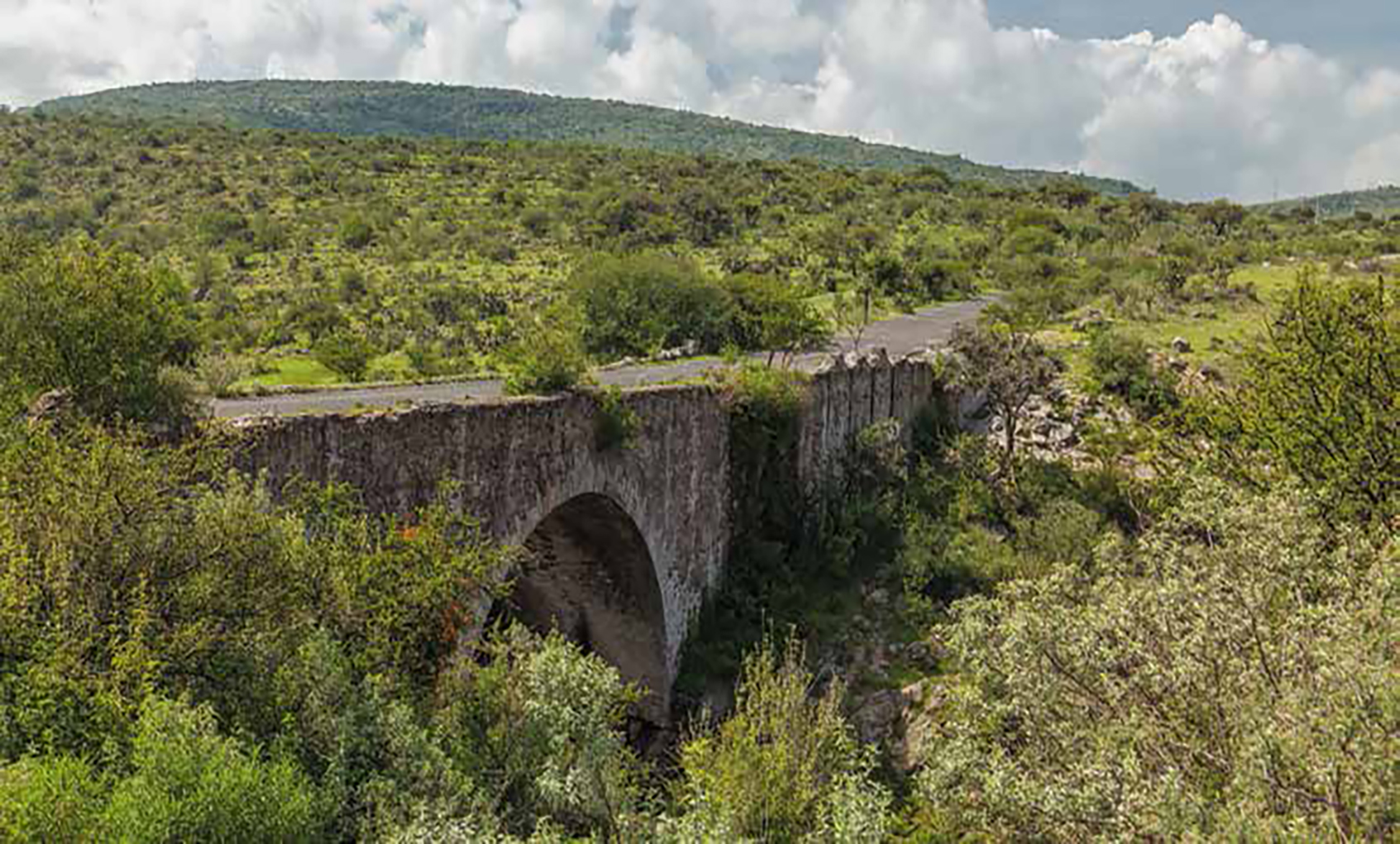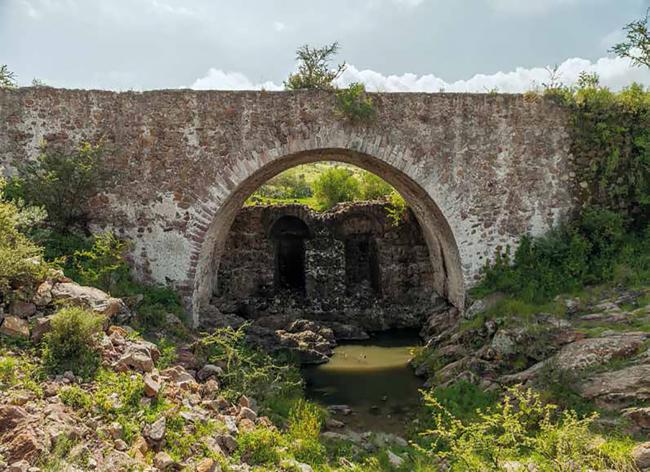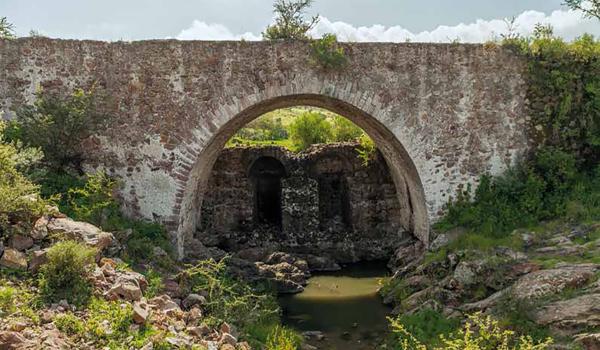Puente de El Fraile
Route element
Puente de El Fraile
The evangelization of the Bajío undertaken by the Franciscans began in Jilotepec, with the support of the Otomi people. They founded numerous indigenous towns, which later became Spanish settlements. These places are now part of the Royal Inland Road as it passes through the present-day state of Guanajuato.
According to tradition, in 1568, with the Franciscans already settled in the area, they hired the sculptor Matías de la Cerda, who lived in Pátzcuaro, to create two figures of Christ in His invocation as the Lord of the Conquest. These statues were destined for San Miguel el Grande, now San Miguel de Allende, and San Felipe Torres Mochas, which was founded as a presidio in 1554 and elevated to a villa in 1562.
Fray Francisco Doncel and Fray Pedro de Burgos were entrusted with traveling to Pátzcuaro to receive the sculptures. On their return journey, just before reaching San Miguel, as they crossed the Chamacuero stream, a group of Chichimecas attacked the friars' caravan. The guards who accompanied them abandoned them to their fate. It is said that the friars clung to the effigies to protect them and themselves from the attackers, who overwhelmed the terrified priests, killing them and seizing the belongings that the guards had left behind. They took everything except the sculptures. The friars breathed their last while clinging to the Christs.
It is said that the statue protected by Fray Francisco Doncel is the one venerated in San Felipe, and that some traces of the friar's blood can still be seen on it. Later, at the site of the sacrifice, a bridge was built, now called the Puente del Fraile, where there are two niches dedicated to the martyred monks. Locals claim that, since then, especially at night, travelers crossing the bridge have seen apparitions of the two friars.







